Power Control Unit - 2022 Upgrade for UpX4 Neo 2020
by John Paul Chacha on Thu, 17th Apr 2025. Read 1296 times.
When using the amp at night for quiet listening or when watching movies, this can be a significant problem. It is also wasteful from an energy perspective, although that is somewhat mitigated by the automatic shutdown after 5 minutes without a signal.
As mentioned above, the Core reacts well to fluctuating supplies, so the aforementioned ramp up of supply voltage can be effected in milliseconds, such that the amplifier can respond to a sudden loud pass mid-beat. This response is so effective that during testing, a quiet scene in a movie followed by loud activity such as thunder or an explosion would be handled without any audible glitches.
The PCU drops the voltage supplied to the amplifier from about 100V to below 30V, nominally 25V. This reduces standby power consumption to less than 8W, which reduces heat significantly, and allows the output modules to be cooled passively almost indefinitely. This means that the fans will not come on, and the envelope within which this is possible is quite significant - output voltage swings of as high as 10V base-to-peak can be accommodated, which is far much louder than one would expect. It is quite possible to get your neighbours to complain about the noise without switching to high power mode.
This was followed by a circuit board in the same shape, as will as the stilts that would hold the mezzanine:
Next, I did the circuit. The PCU takes two transformer outputs, both AC, and uses a relay to switch between the two and output to the rectifier. This design was chosen because switching AC is less problematic and less disruptive than switch DC; you get far less arcing and the rectifier and its capacitors will smooth out the voltage transition.
<
The PCU needs to provide the isolated low voltage supply that the unit it replaces was doing; additionally, it needs its own low voltage supply, which must be isolated so that the amplifier ground and low voltage grounds remain separate. The three large capacitors are part of the circuit that does the former, and the small green capacitor is part of the latter. An elaborate multiple-winding transformer is need for this, of course, and I had to wind a new transformer as part of the PCU.
The final piece of the puzzle is that the PCU needs to be able to monitor the outputs of the amplifier. For this, a special cable that goes from each output module to the PCU is required; it is through this that the PCU is able to monitor output and quickly decide if it is time to go high-voltage:
Background
The output stages in the Neo 2020 have standby currents of about 110mA. With three channels at a supply voltage of 100V, that translates to an idle power consumption of more than 11 watts per channel, or 33 watts total. This is not insignificant; in fact, it is enough to cause the cooling fans to kick in every 5 minutes or so.When using the amp at night for quiet listening or when watching movies, this can be a significant problem. It is also wasteful from an energy perspective, although that is somewhat mitigated by the automatic shutdown after 5 minutes without a signal.
Principle of Operation
The PCU, or Power Control Unit, was designed to remedy this by taking advantage of the UpX-4 Core's ability to run on a wide range of supply voltages with no impact even if the supply voltage fluctuates. The PCU takes advantage of this by reducing the amplifier's supply voltage when output power requirements are low, then quickly ramping up the voltage when there's a sudden need for high power. If the output power demand reduces below a predefined value, then the PCU starts a timer, and if this expires before there's a demand for high power, then the voltage is reduced.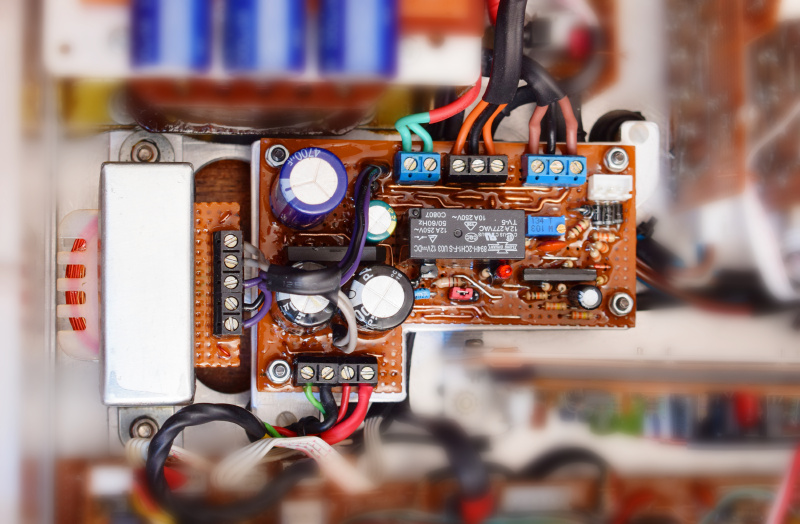
As mentioned above, the Core reacts well to fluctuating supplies, so the aforementioned ramp up of supply voltage can be effected in milliseconds, such that the amplifier can respond to a sudden loud pass mid-beat. This response is so effective that during testing, a quiet scene in a movie followed by loud activity such as thunder or an explosion would be handled without any audible glitches.
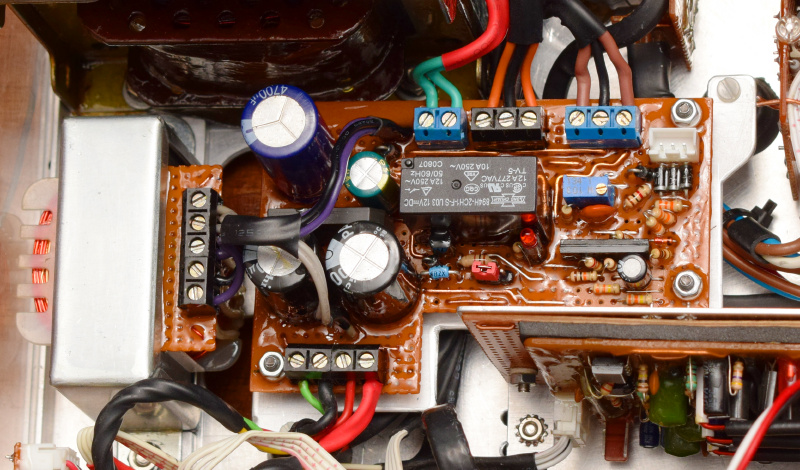
The PCU drops the voltage supplied to the amplifier from about 100V to below 30V, nominally 25V. This reduces standby power consumption to less than 8W, which reduces heat significantly, and allows the output modules to be cooled passively almost indefinitely. This means that the fans will not come on, and the envelope within which this is possible is quite significant - output voltage swings of as high as 10V base-to-peak can be accommodated, which is far much louder than one would expect. It is quite possible to get your neighbours to complain about the noise without switching to high power mode.
Implementation
To accommodate the PCU, the low power supply unit and its auto-transformer would have to go, and the PCU would need to take over that function as well as its power control duties. To accommodate this, I had to build a raised mezzanine aluminium platform on which the circuit would sit, and in the shape of the available space: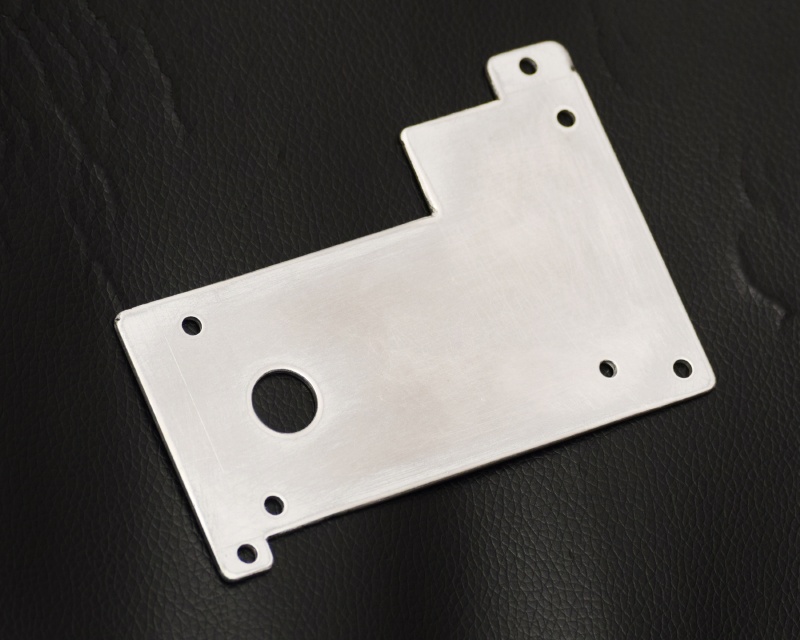
This was followed by a circuit board in the same shape, as will as the stilts that would hold the mezzanine:
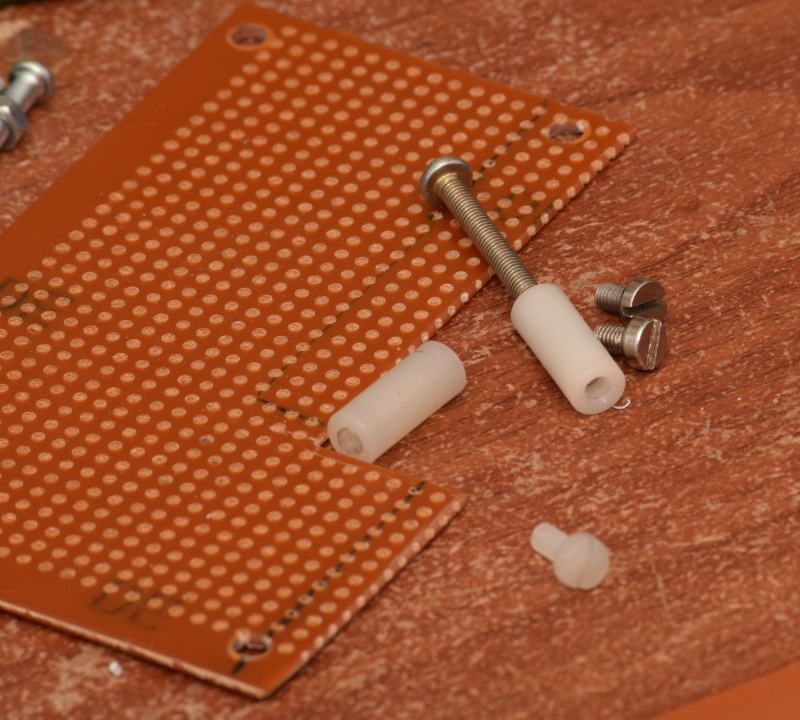
Next, I did the circuit. The PCU takes two transformer outputs, both AC, and uses a relay to switch between the two and output to the rectifier. This design was chosen because switching AC is less problematic and less disruptive than switch DC; you get far less arcing and the rectifier and its capacitors will smooth out the voltage transition.
<
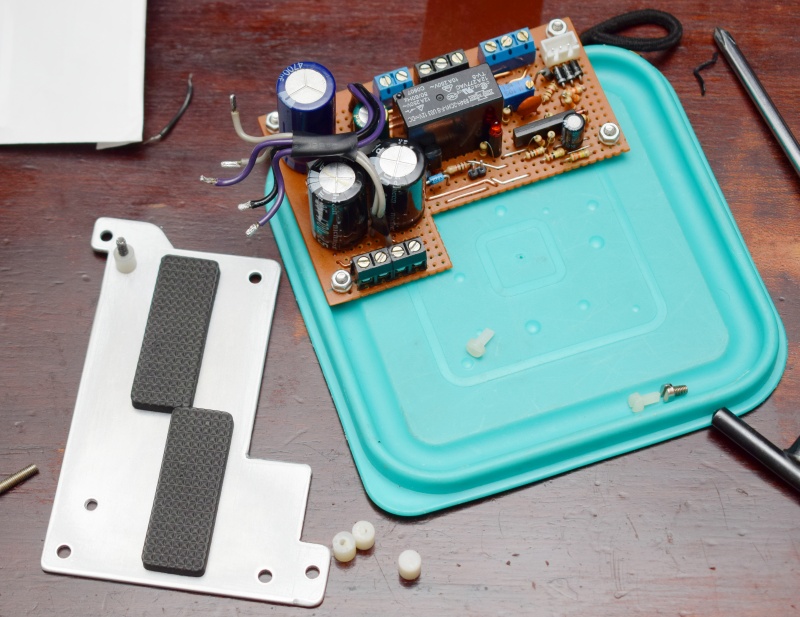
The PCU needs to provide the isolated low voltage supply that the unit it replaces was doing; additionally, it needs its own low voltage supply, which must be isolated so that the amplifier ground and low voltage grounds remain separate. The three large capacitors are part of the circuit that does the former, and the small green capacitor is part of the latter. An elaborate multiple-winding transformer is need for this, of course, and I had to wind a new transformer as part of the PCU.
The final piece of the puzzle is that the PCU needs to be able to monitor the outputs of the amplifier. For this, a special cable that goes from each output module to the PCU is required; it is through this that the PCU is able to monitor output and quickly decide if it is time to go high-voltage:
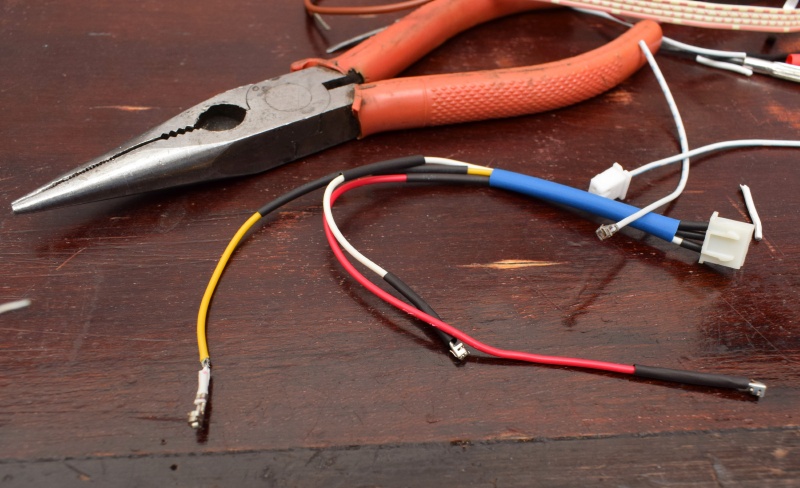
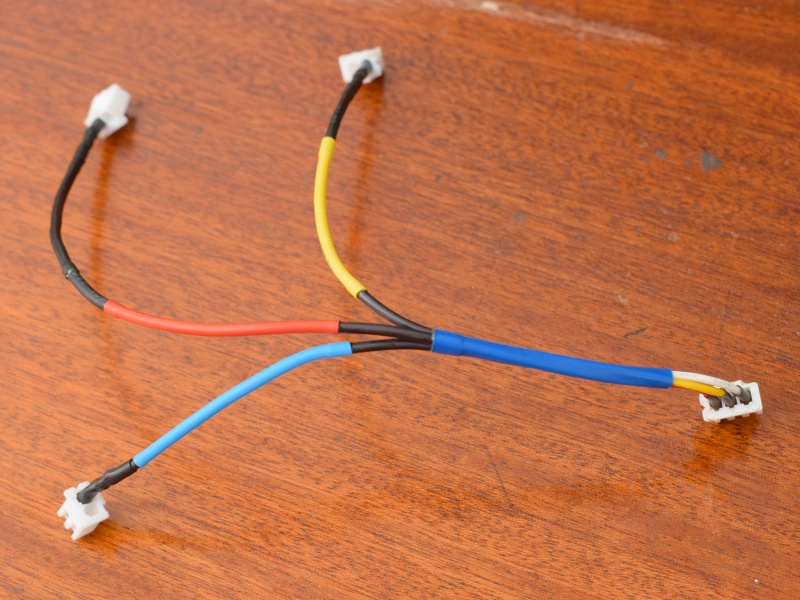

Quick Links
Popular Articles
Other Content
Donations
Did you like the article?
Kindly make a donation via PayPal to keep the projects going.
Kindly make a donation via PayPal to keep the projects going.

